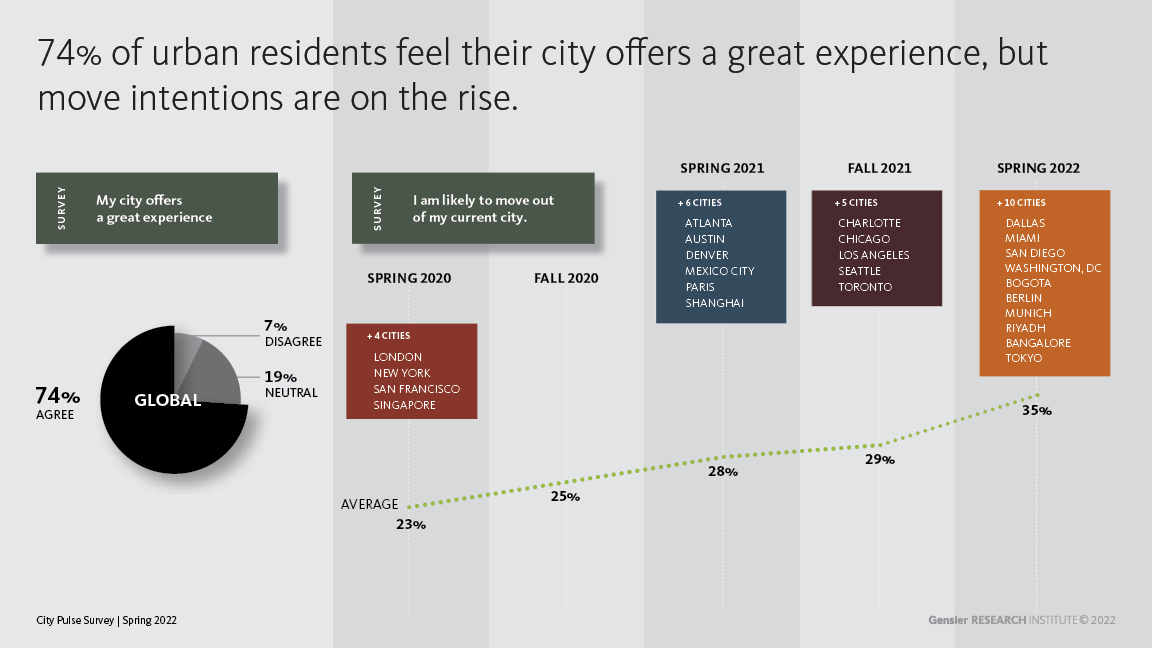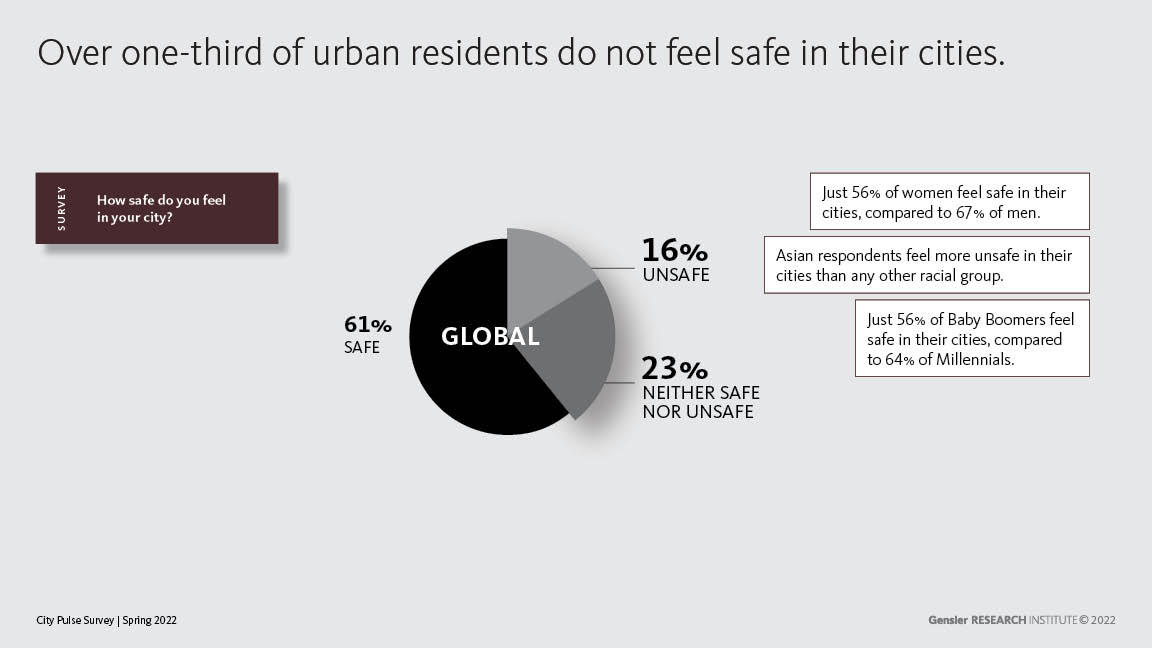At the time of this publication, many urban centers around the world are relaxing the pandemic-related restrictions that have dictated city life for the past two years. People are going back to their schools and workplaces, gathering in bars and restaurants, and attending in-person events and celebrations. In some ways, life is resuming a state of normalcy — but in many ways, our lives have fundamentally shifted.
Cities today are at a crossroads: most urban residents believe that their city provides a great experience, but they also think that it’s time to completely rethink city life in light of the unprecedented experience of the last two years. To dig into what the future of cities holds, we surveyed 12,500 residents of 25 cities around the world to understand how people feel about their cities today and what improvements could build a better future. The latest Gensler City Pulse Survey focuses on three areas in which the pandemic has triggered seismic shifts at personal and societal levels: affordability, work, and safety.

Most people are satisfied with their city experience, but that may not be enough to make them stay.
74% of urban residents surveyed think that their city offers a great experience, a number which remains fairly stable across North America, Latin America, Europe/Middle East, and Asia-Pacific. However, move intentions are on the rise, particularly in U.S. cities. We’ve asked respondents about their likelihood of moving since the first City Pulse Survey in 2020. As we’ve surveyed more cities throughout the past two years, we’ve also seen increases in the average desire to relocate. In Spring 2020, the global average of people who wanted to move out of their city was 23%. At the time of our Spring 2022 survey, 35% of urban residents reported wanting to relocate. When looking at the data by individual city, respondents from U.S. cities are nearly 1.5x more likely to want to move from their current cities than the average of those from non-U.S. cities.

Affordability has become a critical issue in urban centers.
44% of urban residents live paycheck to paycheck — this rises to half of Gen Z and Millennial respondents, and over half of renters in cities. Nearly half of urban residents feel that the costs of living and housing have increased. Over one-third of global residents have experienced wage decreases since the start of the pandemic, with Gen Z respondents (41%), those with a disability (50%), and Black respondents in the U.S. (50%) affected the most.
In the face of these rising costs and wage decreases, 49% of unretired city dwellers are worried about saving for retirement, and 49% of people who do not currently own a home are concerned about their ability to one day buy property. And, our survey data indicates that while most people haven’t moved to improve their financial situations, they are traveling less, not saving money, and taking on another job or additional hours.

Cities must deliver on design improvements that help people feel safe.
Globally, just 61% of urban residents feel safe in their cities, with data varying by region. Just 20% of respondents from Latin America reporting feelings of safety within their cities, compared to 80% of respondents from Asia-Pacific. Additionally, fewer than half of urban residents think their city is effectively addressing public safety concerns, with nearly 40% of urban residents feeling that homelessness and crime have gotten worse since the start of the pandemic. City dwellers show different preferences for public safety practices by region, but increased mental health services, police presence, and city safety apps rise to the top, according to survey findings.
City Pulse Survey Spring 2022 Methodology
The City Pulse Survey is an anonymous, panel-based survey of 12,500 urbanites in 25 cities across the world, which was conducted online from January 25 to February 18, 2022. Respondents were required to be residents within the city proper boundaries. Survey respondents from Los Angeles were required to be residents of the county. Respondents were asked about their experiences, opinions, and preferences regarding living in their city. Participants were demographically diverse by gender, age, income, and education level.
Download the full Gensler City Pulse Survey Spring 2022 to explore to reimagine city life for a post-pandemic future. Our data provides key insights into the factors that positively influence the overall city experience.
